Jane Place, Tanunda
B 1922 J.E. Dodd. 2 manuals, 10 speaking stops, 4 couplers, tracker;
altns 1969; res & enl 1993 George Stephens.
2 manuals, 12 speaking stops, 4 couplers, tracker.
Gt: 8.8.8.4.II. Sw: 8.8.4.2-2/3.2. Ped: 16.16.
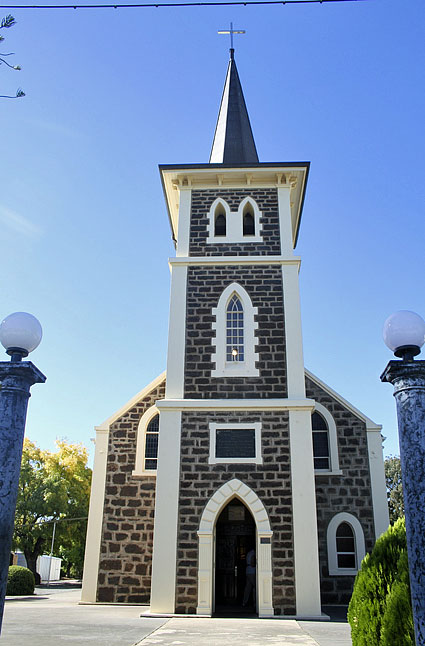
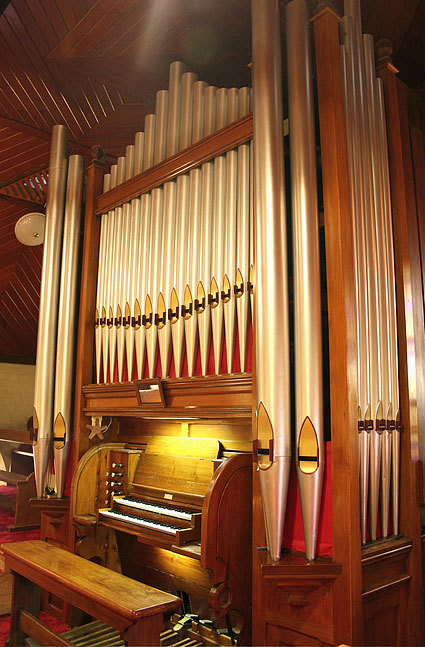
St John's was formed by a breakaway group of 54 members of the nearby Langmeil Church in 1860. The organ was the first of a number to be supplied in the district by J.E. Dodd. It features the Dulcissima stop - unique in Australia - and used on only a handful of instruments made by this builder. No other such stops appear on the organs in the Barossa Valley. Following the fashion of the 1960s, this organ too has been altered, the Cornopean being removed and mixtures and mutations added.
| Great Open Diapason Claribel Dulcissima Octave Diapason Mixture Swell Violin Diapason Hohl Flute Dulcet Nazard Fifteenth [Cornopean] [Mixture] Pedal Bourdon Echo Bass |
8 8 8 4 II 8 8 4 2-2/3 2 [8] [II] 16 16 |
from Swell 1993 added 1993 in place of Mixture removed 1969 added 1982, relocated to Great 1993 |
From
the 2009 OHTA Conference Book,
David Shield writes: The
creation of St Johns arose from a disagreement. 54 members of Kavel’s Langmeil congregation signed a
document indicating preference for G.W. Staudenmayer of Light Pass as their
pastor. Services began to be held
in private homes. Alternatives
were sought including the purchase of a wheat store and the possibility of
building on the current cemetery site (also known as Hallet’s Valley). The church was built in 1868 without a
tower but with a single bell.
Initially a simple structure, in 1887 a slate floor was laid and the
tower, built by Messrs D. Both and W. Trotte, was added. Two
new bells were also installed.
These were presented by Gottleib Ernst Schulz and made by F. Otto in
Hemelingen bei Bremen in 1886.
Cast in bronze the larger bell is 750 mm at the mouth and weighs 243 kg,
the smaller of the two is 622mm at the mouth and weighs 137 kg. They ring out the tones of B and
D. Apart from Dutton to the north
St John’s has the only two-bell peel in the Barossa Valley.1 In
1968 the previous spire, regarded as temporary was replaced with a new spire
patterned on a style common in Silesia.2 The
role and importance of the bells in earlier times needs to be understood. The larger bell was rung on the
Saturday evening as the sun set beneath the horizon reminding the faithful that
the Lord’s Day was at hand and of their need of preparation through meditation
and prayer. The same reminder was
peeled on Sunday, half an hour before service was to commence. Prior to the Gospel feast beginning
both bells sounded a final invitation.
Towards the end of the service a single bell would strike three times
thrice in succession (3 x 3) to inform the sick of the pending Lord’s Prayer
and inviting them to participate.
The bells were also used for high festive days and on occasions of
marriage and death. Some of these
practices continue even today.3 A
feature of this church are the carved statues, a feature that Dodd took into
account when suggesting the position of the organ. These were the gift of G.E. Schulz and were given in 1893 on
the occasion of the 25th anniversary of the dedication of the church. The figures represent Christ, the
apostles Peter and Paul, the law-giver Moses, and the weeping prophet Jeremiah.4 It
seems clear that St John’s had obtained a pipe organ prior to 1910. It obviously gave trouble and was
replaced by a reed organ. It is
mentioned in the Centenary booklet of 1960 and is also spoken of in letters
from J.E. Dodd to Berthold Reush, the organist of the church, in 1910. In
his letter of 15 August 1910, J.E. Dodd mentions the first organ. Submitting five specifications and
costs for one- and two-manual organs, Dodd says, “I might mention that “I have
[not] taken the existing organ
in any way into account, and before I could see whether this could or could not
be advantageously incorporated in the new instrument it would be necessary for
me to go over the church and organ.
I could then advise you whether it would be better to sell the existing
organ as it stands, or incorporate same in new”.5 Dodd
obviously visited the church in 1910.
In a long letter to Reusch in November, he advocated an instrument “of
no smaller size than my scheme number five”. From “chatting with many members of [the] congregation” he
deduced they needed this size of organ, suggesting “If you are not prepared to
do this, I would urge that the matter stand in abeyance until you are prepared
and in a position to do it.” This
proved to be the course of action they took for the organ was not ordered at
his time, the congregation persevering with the reed organ for a further 10
years. Dodd
had also spent some time considering the position of the instrument. Under no circumstance was he prepared
to recommend placement in a gallery.
It would mar the organ tone and would never stand in tune. It would be subject to heat from both
inside and out. The pipes would
have to be mitred owing to the ceiling height. His second suggestion was to place the organ on either side
of the central altar and pulpit.
The disadvantages he saw were that the organ would tend to hide the
figures on the wall and the organist could not have each member of the choir
under his absolute control. His
ideal solution was to move altar and pulpit. The pulpit was to be moved to the right hand side and the
altar be brought forward four feet six inches (1.37m), the organ to be placed
behind with the figure of Christ above.
The console was to be detached and placed in front of the altar, the
trivial extra cost of £30 for the extended action “should not stand in the way
of getting so good a result”.6 A
reed organ had replaced the original organ in St John’s owing to its need for
constant repair. The
“Balgentreter” (organ blower) had apparently only received 5/- remuneration in
one year, as he was required to do very little pumping.7 The replacement reed organ proved
inadequate and the current instrument was ordered from Dodd in 1920. For the jubilee celebrations in 1918
the pulpit had been moved from above the altar to the left hand side of the
church. The organ was dedicated on
1 August 1920 and Clem Geyer of Langmeil congregation was engaged as organist,
a position he held for 23 years.
The organ, which had cost £623, was installed on the right hand side of
the church where it was to stay until the 60th jubilee. In 1928 the gallery was rebuilt and the
organ was moved to Dodd’s “worst possible position”.8 This organ was
the first of a number to be supplied to the Barossa by Josiah Eustace
Dodd. It has undergone a few minor
tonal alterations. In 1969 the
“cornucopean” (sic) stop was removed with a Fifteenth 2ft rank substituted. In 1982 the Mixture was added to the
swell.9 George Stephens
restored the organ in 1993, moving the Mixture to the Great and adding a Nazard
to the Swell. The organ features
the Dulcissima stop which is unique in Australia being used on only a handful
of instruments made by this builder, no others being in the Barossa
Valley. Owing to a lack of height
in the gallery, the largest pipes in the façade are grouped in two outer
three-pipe towers, on either side of the attached drawknob console. J.E. Dodd 1921 2 manuals, 12 speaking stops, mechanical action enlarged George Stephens Pty Ltd 1993 GREAT ORGAN Open Diapason 8 Claribel 8 Dulcissima 8 Octave Diapason 4 Mixture II (from Swell 1993) Swell to Great SWELL ORGAN Violin Diapason 8 Hohl Flute 8 Dulcet 4 Nazard 2-2/3 (1993) Fifteenth 2 (added 1969, revoiced
1982) Swell Super Octave Tremulant (by trigger pedal) PEDAL ORGAN Bourdon 16 Echo Bass 16 derived Great to Pedal Swell to Pedal compass 58/30 Location: west gallery 4 composition pedals Balanced mechanical swell
pedal 1 Ebenezer (1889) and
Bethany (1881) have bells cast from the same foundry. Bagot, H., ‘Bells of the Barossa’, Journal of Friends of
Lutheran Archives no 10 (October
2000), pp.9-16 2 Church brochure, Loffler L.W., Beyond 1960 St John’s Tanunda
1960-1985, p.9 3 Centenary of St
John’s Ev. Lutheran Congregation Tanunda, 100 years History 1860-1960, pp.6-7 4 Church brochure
prepared by Pastor L.W. Loffler, St John’s Tanunda August 2nd
1868 – August 1st 1993. The Centenary booklet
names John not Jeremiah as one of the statues, Centenary, op.cit.,
p.9 5 Dodd to Mr Reusch (sic) 15 August 1910:
DLB 1910-1912, pp.258-259 6 Dodd to Reusch 3
November 1910: DLB 1909-1913,
pp.394-399 7 Centenary of St
John’s Ev. Lutheran Congregation Tanunda, 100 years History 1860-1960, p.13 8 Dodd to W. Susansky
(sic) [probably F.W. Gursansky Trustee 1911-1936] 30 May 1922, requesting
advice re positioning organ:. DLB 1909-1914 p.855; Centenary op.cit., p.13 9 Loffler L.W., op.cit., p.6
The organ was altered in 1969 when the Cornopean was removed and was enlarged in 1982 when a Swell Mixture was added. The organ was repaired and enlarged in 1993 by George Stephens when he place the Swell Mixture on the Great, replacing the Swell Mixture with a Nazard on the Swell.
Mechanical action
located in west gallery
Compass: 58/30
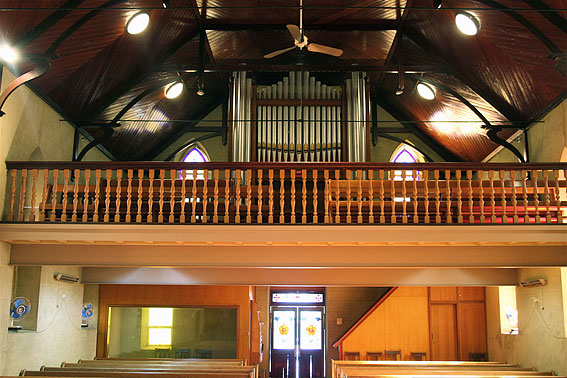
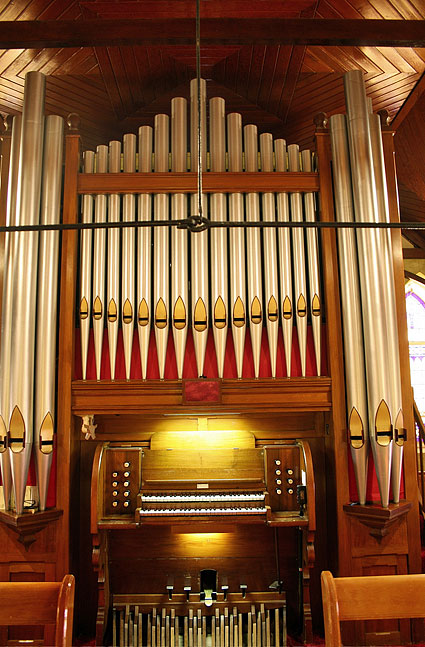

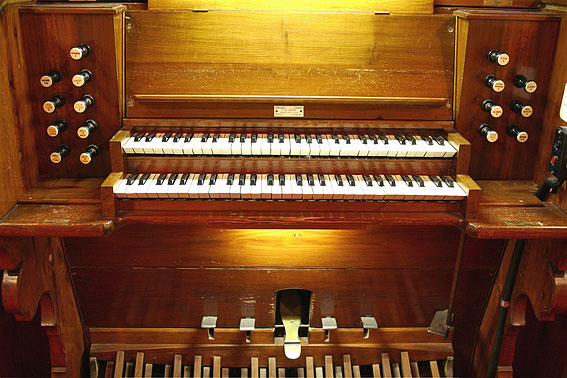
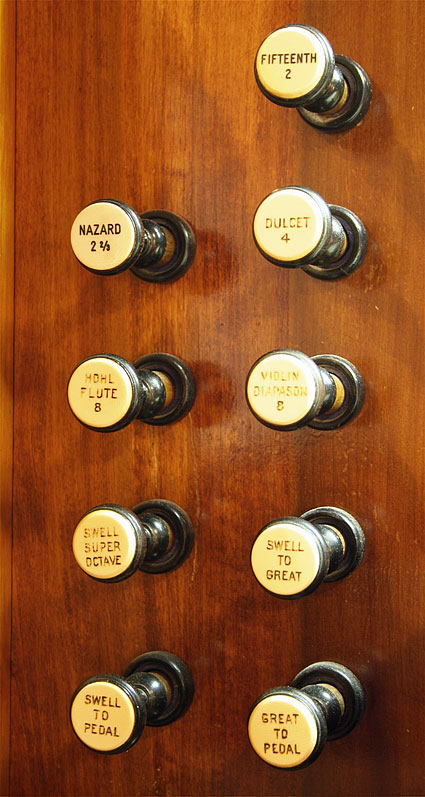
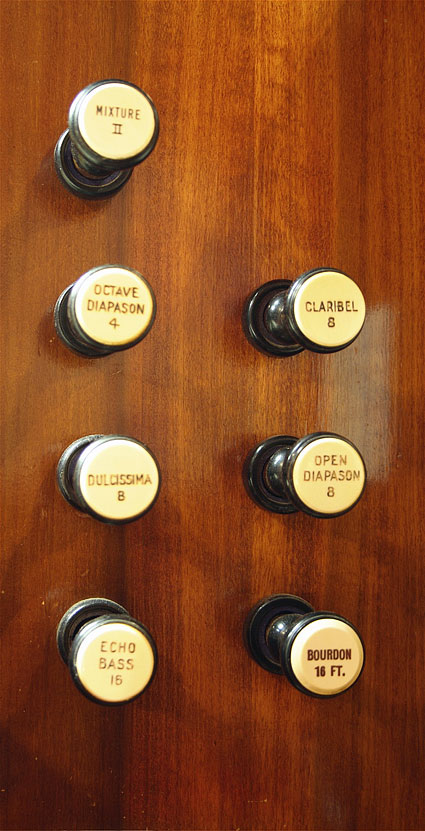
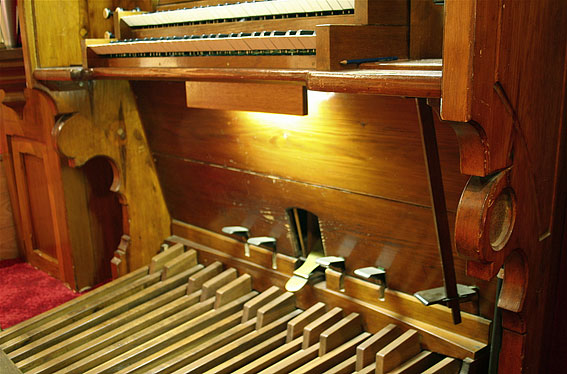
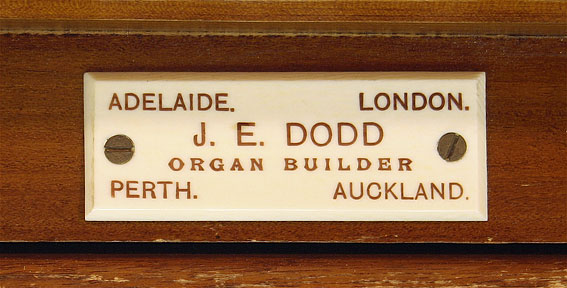
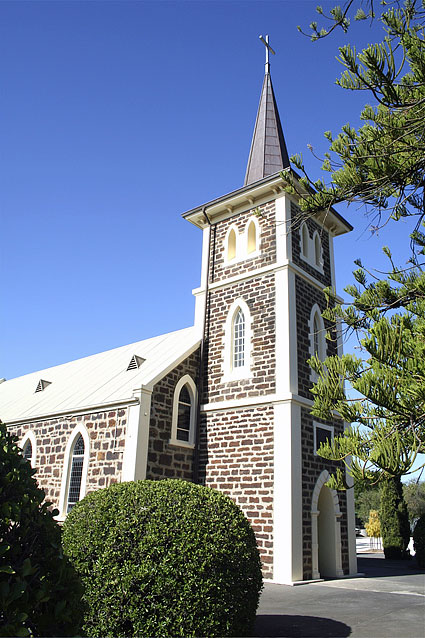
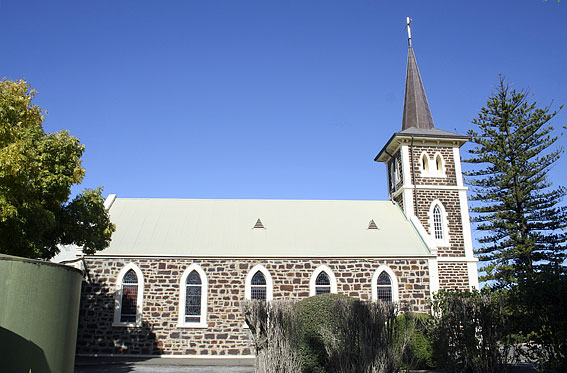
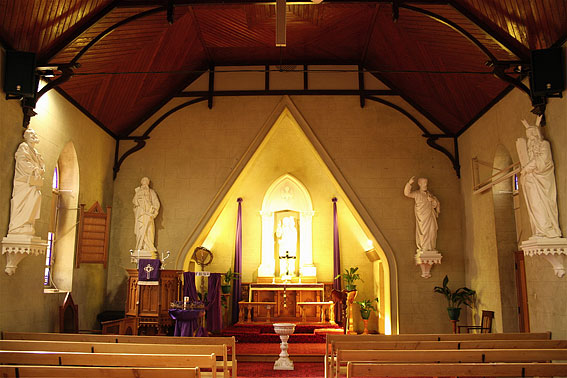
Photos: Trevor Bunning (March 2009)